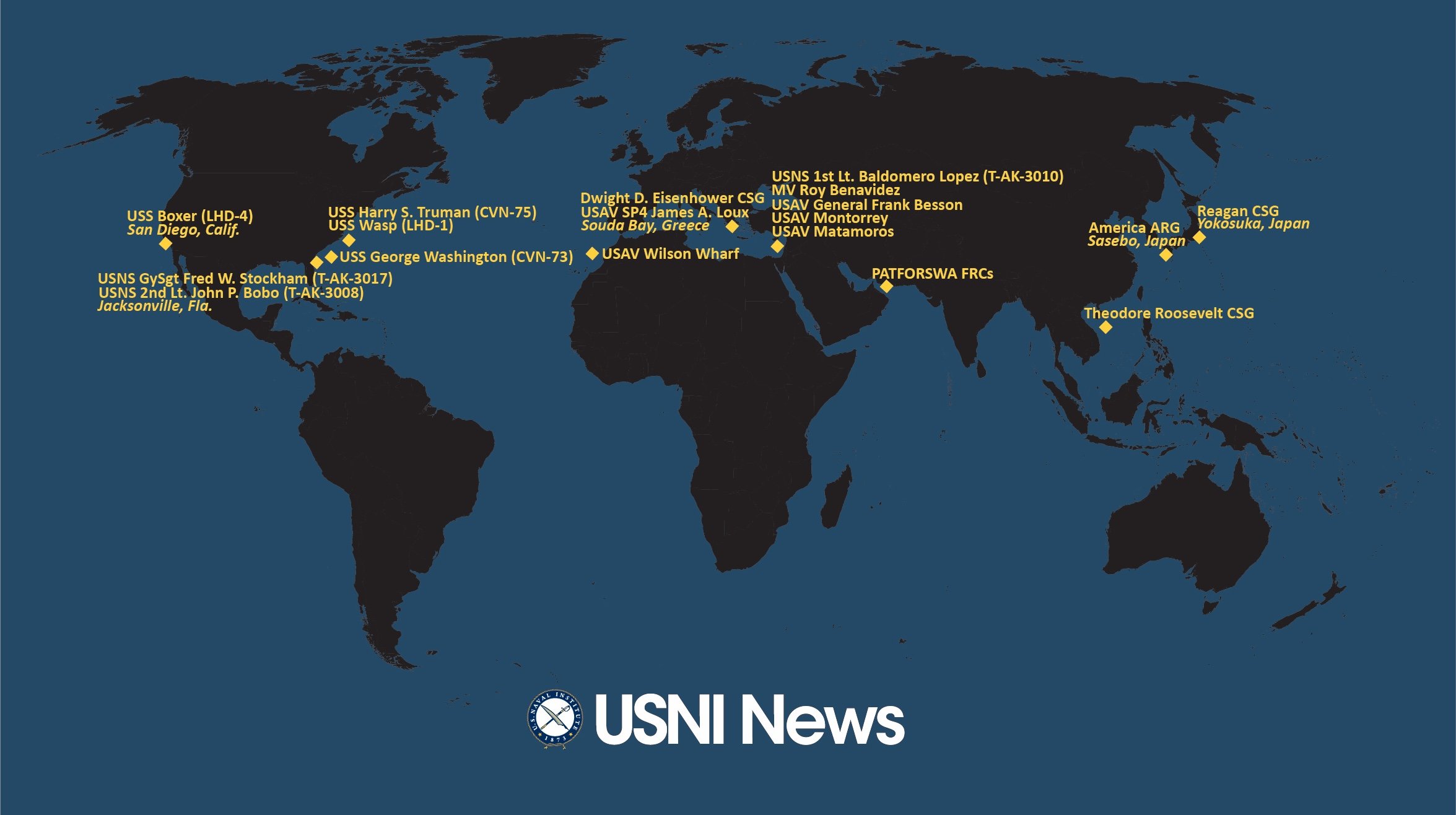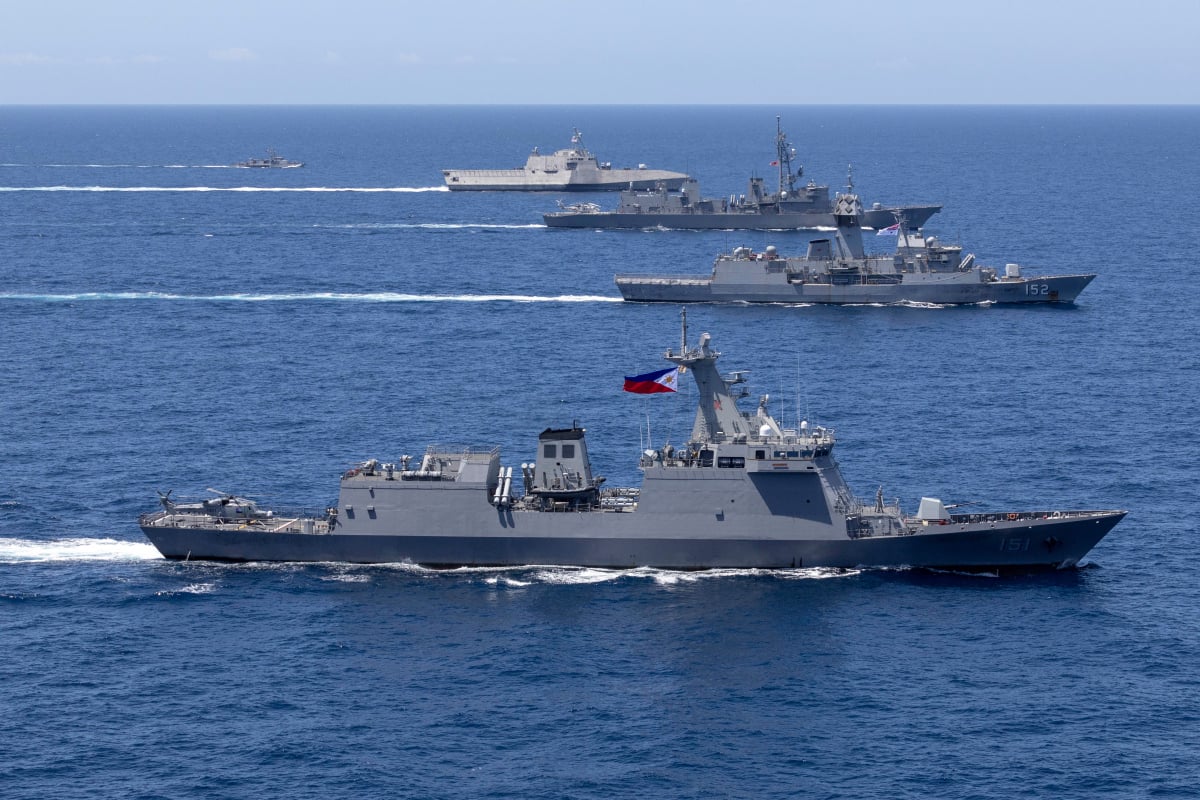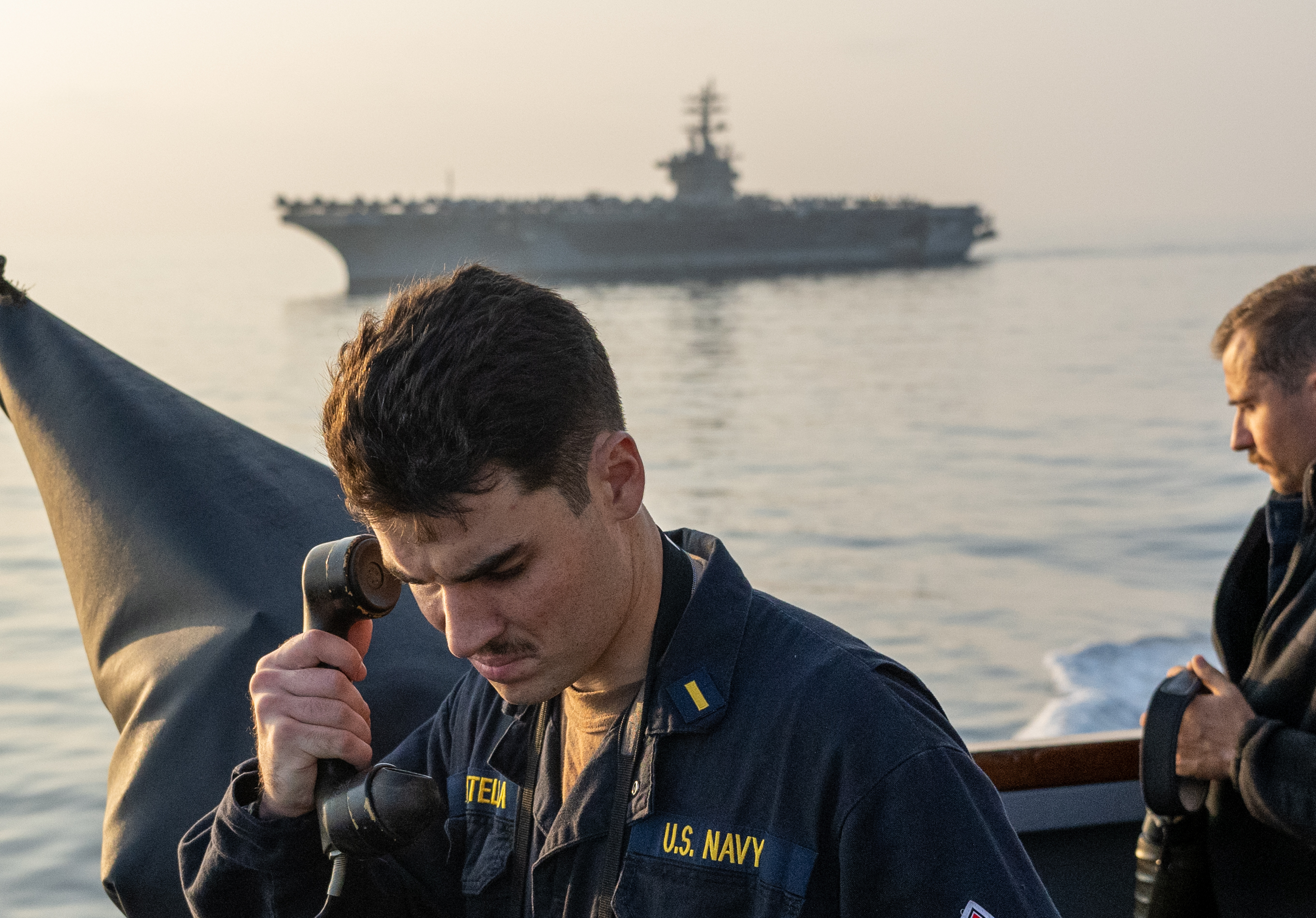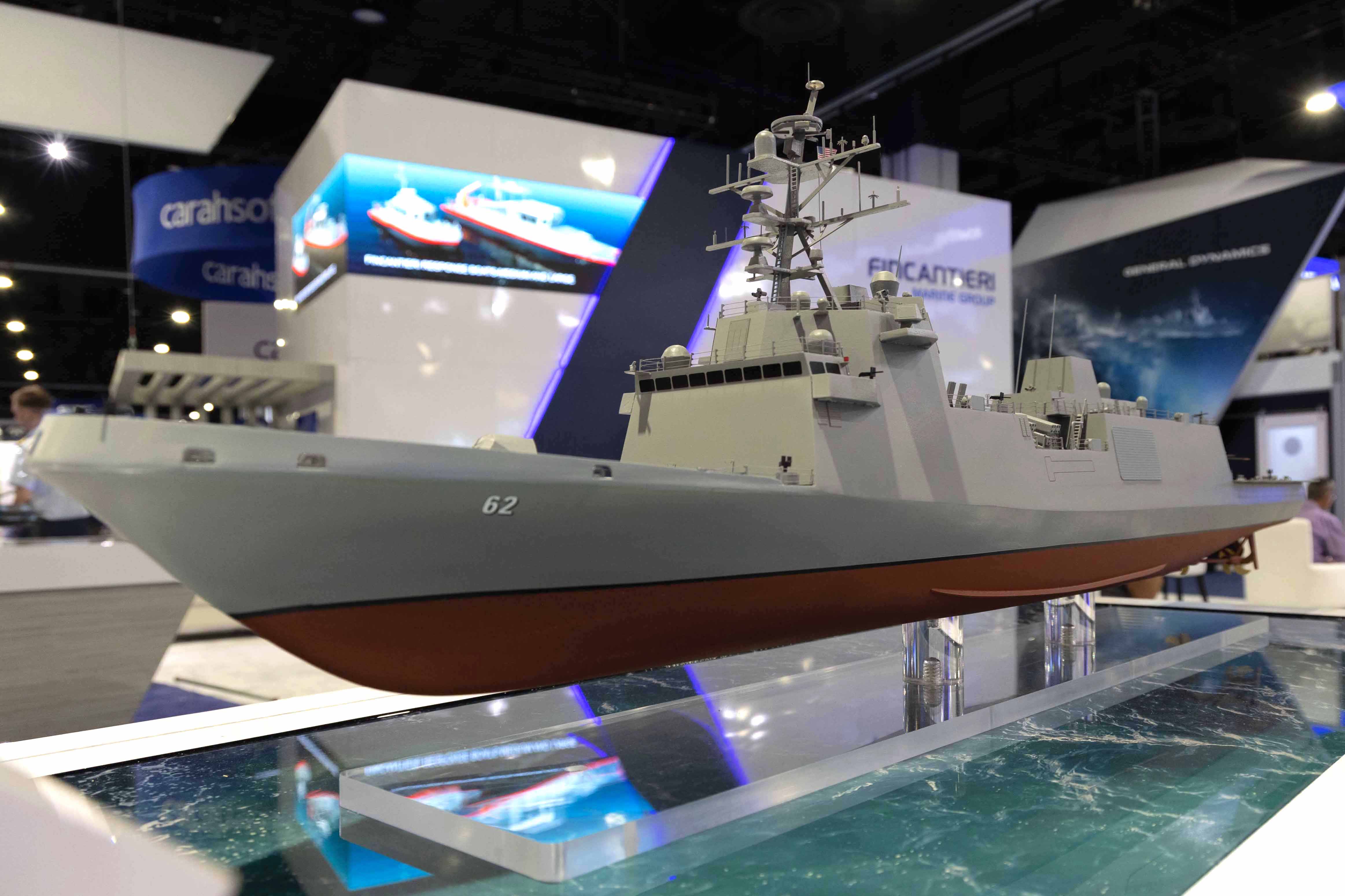
This story has been updated to include comments from Navy officials.
THE PENTAGON – The lead ship in a new class of guided-missile frigates for the U.S. Navy may be up to three years late, USNI News has learned.
Constellation (FFG-62), under construction at Fincantieri Marinette Marine in Wisconsin, may not deliver to the fleet until 2029, three years later than the original 2026 delivery goal, according to a service shipbuilding review.
The program’s delay came to light as part of the 45-day shipbuilding review that Secretary of the Navy Carlos Del Toro ordered earlier this year. In addition to the frigate delay, the Navy confirmed delays in delivering aircraft carrier Enterprise (CVN-80), the lead boat for the Columbia-class ballistic missile nuclear submarine, and the Virginia-class attack boats.
In a one-page summary of the review, the service cited lead ship problems like design maturation, supply chain issues, and difficulty finding skilled workers as factors in the program delays.
The future USS District of Columbia (SSBN-826) is facing a 12 to 16-month delay, according to the Navy’s summary. Last month, USNI News reported that the Navy was looking at a potential one year delay for District of Columbia due to ongoing supplier issues.
Enterprise is facing an 18 to 16-month delay, while the Block IV Virginia-class attack boats are looking at a three-year delay. The Block V Virginia-class submarines, which are larger and feature the new Virginia Payload Module, are currently two years behind schedule. Delays for the Navy’s new T-AGOS(X) ocean surveillance ship, which Austal USA won a contract to build last year, depend on when the program starts new construction.
As for America-class amphibious assault ships, the San Antonio-class amphibious transport docks, the Arleigh Burke-class destroyers and the John Lewis-class fleet replenishment oilers, the deliveries are “late to contract” but “are stable and tracking to Program Manager estimates,” according to the Navy’s summary.
Constellation-class Frigates
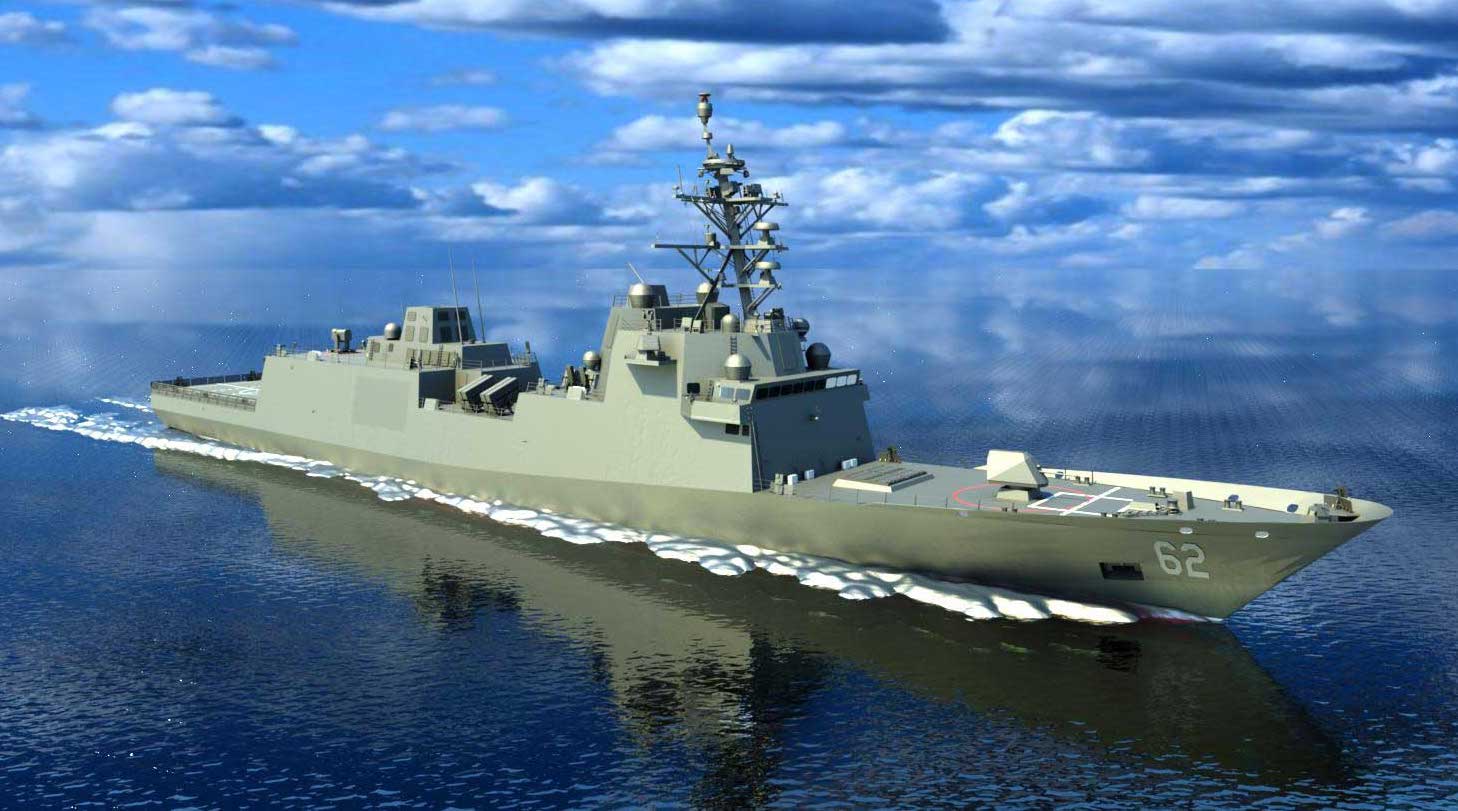
In January, just before Del Toro announced the 45-day shipbuilding review, USNI News reported that the lead Constellation-class ship was delayed at least a year due to ongoing workforce challenges and design maturation issues.
During a media roundtable with reporters on Tuesday, Naval Sea Systems Command chief Vice Adm. James Downey told reporters that the detail design for the frigate – which is based on Fincantieri Marinette Marine’s FREMM parent design that’s in service with the Italian and French navies – still isn’t complete. The goal is to finalize the detail design this year and the service and contractors are nearing 80 percent completion, Downey said.
“Some of the mix of the contracting roles have changed between prime and sub,” Downey told reporters. “And finishing the design has been critical for us. That’s why we’ve co-located the design force from Fincantieri and their sub with the government in a collaboration center up there to finish.”
In August of 2022, when the Navy green lit Fincantieri to begin building the first frigate, Rear Adm. Casey Moton, then the program executive officer for unmanned and small combatants, said the detail design was just over 80 percent complete.
Asked what’s driving the delays at Marinette, Downey cited the yard’s increased workload, difficulty hiring and keeping talent, and the varying stages of the three programs currently under construction there. The yard is finishing the end of the Littoral Combat Ship line, while also building Saudi Arabia’s multi-mission surface combatant and the U.S. Navy’s new frigate.
Downey said the attrition at Marinette is “significantly different” with the yard building those three programs compared to when it was only building the LCS.
The Navy selected Fincantieri Marinette Marine’s FREMM parent design in 2020 using the rapid requirements process developed by Naval Sea Systems Command. The service awarded the U.S. yard a fixed-price contract for the frigates.
What would become the Constellation-class (FFG-62) followed withering criticism from the late Sen. John McCain (R-Ariz.) of the LCS program. In part due to McCain’s consistent disapproval – he put the LCS on a wanted poster in 2016 – the Navy cut the LCS line and instead pursued a guided-missile frigate based on a parent design.
While the design was based on a long-serving warship, design agent Gibbs & Cox heavily modified the FREMM design to meet NAVSEA requirements, like tougher survivability standards than those of European navies, Navy officials have told USNI News.
At one point the Constellation design shared about 85 percent commonality with the original FREMM design, but the alterations have brought that commonality down to under 15 percent, a person familiar with the changes told USNI News.
Those changes have compounded the already challenged workforce issues at the Wisconsin shipyard, which has struggled to hire in both its blue and white collar workforce. To tackle the workforce shortfalls, the Navy plans to give Marinette $50 million for the surface combatant industrial base. The yard is using those funds to incentivize both its blue and white collar workforce with bonuses to stay at Marinette.
Fincantieri is currently on contract to build the first four frigates. The delivery dates for the second, third and fourth ships “are under review,” according to the Fiscal Year 2025 budget justification documents released last month.
Columbia-class Boats
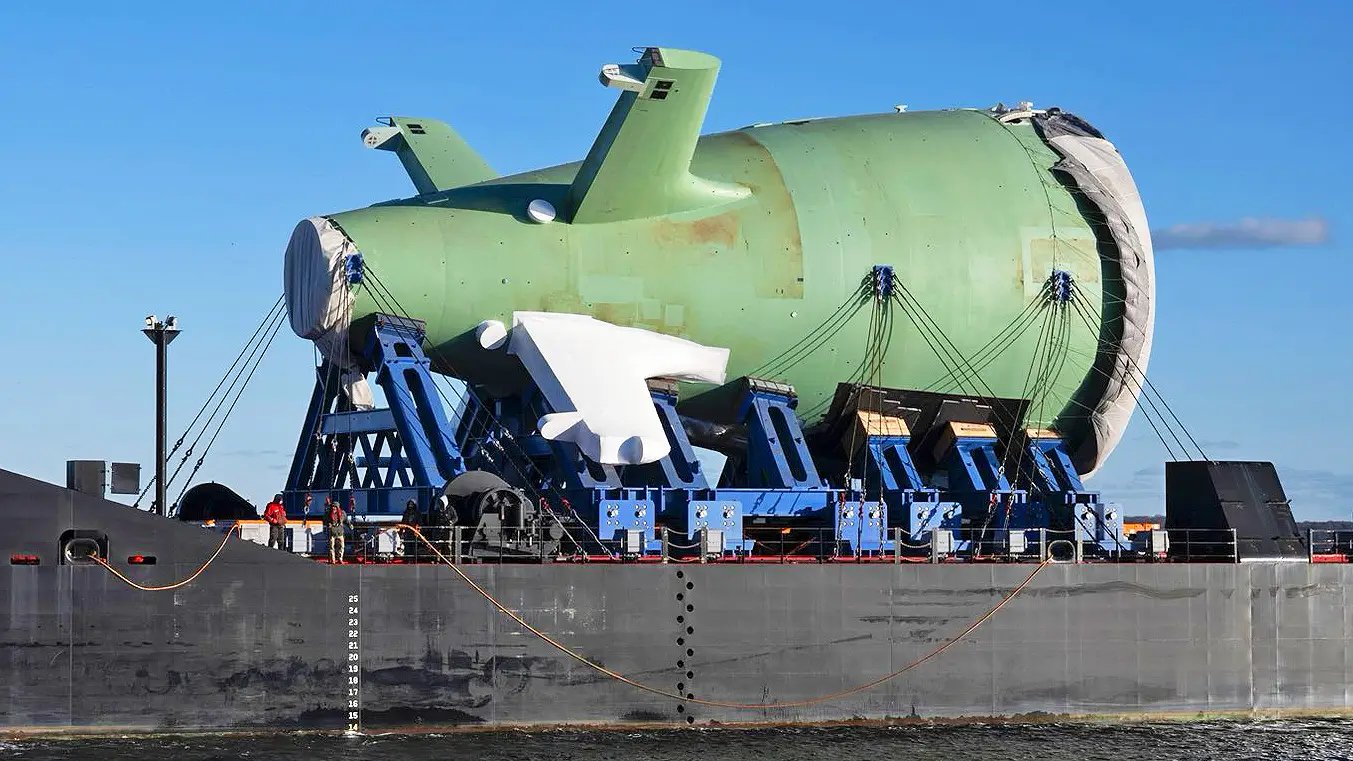
The lead boat in the Columbia-class program was scheduled to deliver in October 2027. A 12 to 16-month delay would put that delivery date out to October 2028, or potentially early 2029.
Asked about the delay, Navy acquisition executive Nickolas Guertin said it’s “related to the whole of ship and getting all the modules in.”
Downey said some parts – including those that are shared between the aircraft carriers and submarines – are late, but the technology aboard the boat has not been an issue. The permanent magnet motors – a new technology that will drive the submarine’s propulsion system – are not “driving” the delays, he said.
The program, which recapitalizes the sea-based leg of the nuclear triad, is operating under a thin margin because the new Columbia boats need to replace the Ohio-class submarines one-for-one.
The heart of the Columbia-class ballistic nuclear missile submarine is a complex electrical system that aims to make the class quieter than the legacy Ohio-class boats.
The turbines, powered by the steam from the submarine’s nuclear reactors, don’t connect mechanically to the propulsion system. Instead, the turbines power a complex electrical grid inside the submarine that reduces the number of mechanical connections inside the boat, reducing noise. While USNI News has reported that delayed delivery of the turbines has been a challenge for production, little has been said about the progress of assembling the electric drive system.
Another issue contributing to the delay is the construction of the boat’s bow section, which HII’s Newport News Shipbuilding builds in Virginia. The building arrangement for the Columbia program has lead contractor General Dynamics Electric Boat assembling the middle of the boat’s hull at its yard in Groton, Conn., and manufacturing facility in Quonset Point, R.I. The bow and stern sections get barged from Newport News to New England, where the different sections are then put together. But Newport News has been late in getting its sections up to Electric Boat.
The Navy has developed a plan to extend the service lives of up to five Ohio boats to provide the service with some cushion. The short extensions would give each boat three more years of service life. Last year, Navy officials said they had several years and budget cycles before they need to make a final decision about whether or not to perform the service live extensions.

